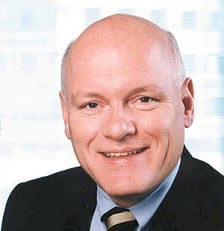William Millar, President of the American Public Transportation Association

.floatimg-left-hort { float:left; } .floatimg-left-caption-hort { float:left; margin-bottom:10px; width:300px; margin-right:10px; clear:left;} .floatimg-left-vert { float:left; margin-top:10px; margin-right:15px; width:200px;} .floatimg-left-caption-vert { float:left; margin-right:10px; margin-bottom:10px; font-size: 12px; width:200px;} .floatimg-right-hort { float:right; margin-top:10px; margin-left:10px; margin-bottom:10px; width: 300px;} .floatimg-right-caption-hort { float:left; margin-right:10px; margin-bottom:10px; width: 300px; font-size: 12px; } .floatimg-right-vert { float:right; margin-top:10px; margin-left:10px; margin-bottom:10px; width: 200px;} .floatimg-right-caption-vert { float:left; margin-right:10px; margin-bottom:10px; width: 200px; font-size: 12px; } .floatimgright-sidebar { float:right; margin-top:10px; margin-left:10px; margin-bottom:10px; width: 200px; border-top-style: double; border-top-color: black; border-bottom-style: double; border-bottom-color: black;} .floatimgright-sidebar p { line-height: 115%; text-indent: 10px; } .floatimgright-sidebar h4 { font-variant:small-caps; } .pullquote { float:right; margin-top:10px; margin-left:10px; margin-bottom:10px; width: 150px; background: url(http://www.dmbusinessdaily.com/DAILY/editorial/extras/closequote.gif) no-repeat bottom right !important ; line-height: 150%; font-size: 125%; border-top: 1px solid; border-bottom: 1px solid;} .floatvidleft { float:left; margin-bottom:10px; width:325px; margin-right:10px; clear:left;} .floatvidright { float:right; margin-bottom:10px; width:325px; margin-right:10px; clear:left;}
William Millar, who earned a master’s degree in urban transportation planning and policy analysis at the University of Iowa 38 years ago, came back to Des Moines for the first time in about five years. He participated in a panel discussion about transitioning public transit to the future at the 2010 annual meeting of the Mississippi Valley Conference of the American Association of State Highway and Transportation Officials, which was held in Des Moines.
Millar planned to meet with local American Public Transportation Association (APTA) members and was shown by Des Moines Area Regional Transit Authority (DART) officials the bus system for the first time since the agency was formed.
Washington, D.C.-based APTA is the principal trade organization that represents providers of public transit primarily in the United States and Canada. APTA has 1,542 members: About 400 members are transit systems, roughly 900 are private-sector businesses and a couple hundred are “potpourri” organizations such as university transportation centers or cities that don’t have public transit but would like to.
The organization participates in public policy debates and works with Congress and the executive branch to push for public transportation. It also sets industry standards, commissions research for the industry and runs technical committees.
Millar took some time before his visit to answer a few questions about public transportation trends, the city of Des Moines and his philosophy on transit.
What are the goals that you and your association have for public transportation?
For public transit, we are about making sure that there is good public policy, particularly at the federal level, that supports public transit. We also work with the Congress and the administration to make sure that there is funding support of public transit. We help our members work at the state and local level on issues that they might be facing as well. We are working to improve the quality of public transit across the country. We are also working to expand public transit. According to the U.S. Census Bureau, only about 53 percent of American households have any form of public transit, and our estimate is that in terms of transit that is really usable on a regular basis for average Americans, it is probably more a number like 15 to 20 percent of Americans that have decent service.
What is your assessment of Des Moines’ current public transportation system?
Des Moines has a small bus system, and it’s been a few years since I’ve been to Des Moines, but it is a good little bus system. The last time that I was in Des Moines, you all were debating whether or not you should create the regional transit authority (What is now DART). It seems like you have made some progress, but not having seen the system in five years, I’m certainly in no position to judge the system in any way, but maybe I can answer that question better when I arrive.
Is intercity rail an option Des Moines should be considering?
Well the intercity rail, of course, in America is way behind the rest of the developed world in developing good train service. And President Obama has made it one of his priorities to try to introduce true high-speed rail service to America. Certainly having a good train service that is reliable and hopefully one day will be frequent is an important improvement in accessibility that cities and communities around the world are finding is important to their economic development. So without knowing the Des Moines situation particularly, I would certainly expect that as a state capital, as a regional center connecting to other regional centers, that having a good passenger rail system could be quite helpful, just as having a good interstate highway connection is or having good interstate air service. I think that as the country becomes more cognizant of the need to reduce our reliance on foreign oil, and as we struggle with issues like air pollution and climate change due to greenhouse gas emissions, I think it is past time that America got on board with the rest of the world and did things like develop good intercity rail transportation that can help battle on all those fronts.
There are many businesses that are a part of APTA. What has the business community’s role been lately in promoting public transit?
One of the things that is happening in many communities across the country is the business community is often taking the lead because the business community knows that their success relies on making their community a very attractive place. Especially for the so-called creative folks, or Richard Florida calls them the “creative class.” (Florida is a professor who has been doing a lot of work on what is making communities competitive in the 21st century.) And certainly developing an attractive environment, a cultural environment that is attractive to young people, is part of that. And part of that environment is good public transportation.
What trends are you seeing when you are traveling to different American cities?
So I find in the last few years I’m traveling to a lot more cities that frankly never thought they needed much beyond a bus or two and they are done. And now they are discovering as they put together a bigger development plan, and as they have to compete not only against Omaha, Kansas City and St. Louis, but they have to compete against all the great cities of the world, that the picture has changed because of globalization. Even a lot of places that never really thought they would need public transit are coming to realize that they do need it. Salt Lake City, when I first went there 25 years ago, you sort of wondered would they ever really need public transit, would they support public transit. Today they have one of the premier transit systems in the country and they are talking about whether or not they want to connect into the national rail network that is being put together. Again, a few years ago, I don’t think 10 people in Salt Lake City thought they would need intercity passenger rail service; now they are having very serious discussions about it.
You have a philosophy that all the different modes of transportation need to work together for the collective good of transportation. Can you explain your belief?
Every major community in America needs a variety of transportation choices. I really think what we have seen and learned from around the world is, it is the combination, it is the choice. Some modes of transit are better at some jobs than others. So I think rather than looking at the various modes of transportation as competitors, we need to look at them as pieces of the entire transportation network. And the countries where that network functions the best are the ones where the network is integrated from an intermodal perspective. So in other words, the airport is linked to the highway network and to the rail network, and the rail network is linked to the other modes. That seems to be what is going on around the rest of the world. So my philosophy is that if that is what our goal is, to try to get the best out of every mode, then we need to work together in Washington on strategies that get both the policies right and the funding right, so that the investments can be made either at the national level or by state and local governments.
Can you give an example of how competing forms of transit can benefit from working together?
In the bigger cities, you fly into O’Hare International and you never know how much time to allow because O’Hare is always congested. Well the fact of the matter is, about half the flights that go out of the major airports in America are traveling less than about 500 to 600 miles. Well, a high-speed rail line that is going anywhere from 100 to 500 miles can be perfectly competitive with that airplane. Well why would you want to compete with the airplane? Well at that point, it is better for the airlines to reposition their equipment so that their equipment gets used on the more than 500-mile trips, the real long-distance trips, where the true economy of airfare becomes readily apparent.








